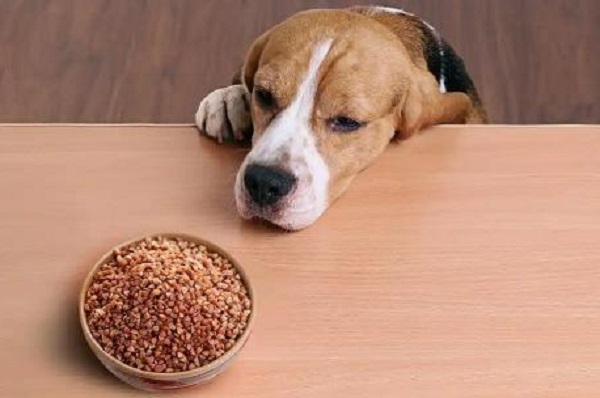Discovering whether quinoa is a suitable addition to your pet’s diet is a common concern for many dog owners. In the vast landscape of superfoods, quinoa has earned its reputation as a nutritional powerhouse for humans. However, the question lingers: Can dogs eat quinoa safely? Join us in exploring the safety and potential benefits of incorporating quinoa into your furry friend’s diet in our article, “Can Dogs Eat Quinoa: Is It Safe to Include in Your Pet’s Diet?”

Quinoa: What Is It?
Quinoa, pronounced keen-wah, is a pseudo-cereal often mistaken for a grain. Native to South America, it boasts high protein, essential amino acids, and a rich vitamin-mineral profile. With more fiber than most grains, it’s ideal for weight management. Despite its grain-like appearance, quinoa is not a true cereal grain, offering a versatile and nutritious option in various dishes.
Is Quinoa Safe for Dogs to Eat?
Quinoa is regarded as a secure and beneficial supplement for canines. This South American seed is gluten-free and may be good for dogs if specific measures are followed. Most dogs may safely eat quinoa as long as they don’t have any food sensitivities. To guarantee your dog’s health, make sure you follow the right procedures while adding quinoa to their food. By doing this, pet owners may provide their furry friends a healthy and varied alternative while also benefiting from the nutritional advantages of quinoa.
What Advantages Does Quinoa Have For Dog Health?
Quinoa has a number of significant benefits for dogs’ health. First off, its high protein content promotes healthy muscular growth and general wellbeing, which is particularly advantageous for dogs whose protein needs are higher. In addition, the high dietary fiber content of quinoa promotes regular bowel movements and proper digestion, which alleviates frequent gastrointestinal issues in dogs and lowers the risk of obesity in maturity.

Quinoa is also a great source of B-vitamins, vitamin E, iron, magnesium, phosphorus, and other important vitamins and minerals. These nutrients are essential for immune system health, metabolic support, and the maintenance of strong bones. Quinoa stands out for having a comparatively low glycemic index, which may allow for a steady release of energy without raising blood sugar levels unnecessarily. This characteristic may improve the general health and well-being of diabetic dogs or dogs who are prone to fat.
How to Give Quinoa to Your Dog Safely
It’s important to gradually introduce quinoa into your dog’s diet in a safe manner. To begin, mix a little quantity—say, a teaspoon—into your dog’s usual kibble. Gradually raise the amount while keeping an eye on your dog’s reaction. It’s critical to stop the introduction and speak with your veterinarian if you see any odd symptoms or indicators of discomfort, such as constipation or vomiting.
If your dog begins to drool, take careful note since this may be a sign of an allergic response. In these situations, getting expert advice is crucial. By using this step-by-step method and paying close attention to your dog’s responses, you can safely introduce quinoa into their diet and determine whether or not it is compatible with their general health.
3 Things to Think About When Feeding Quinoa to Your Dog
Three things need to be kept in mind while thinking about giving your dog quinoa:
- Speak with Your Veterinarian: Get advice from your veterinarian before adding quinoa to your dog’s diet. Based on your dog’s health, nutritional requirements, and any possible allergies or sensitivities, they may provide tailored guidance.
- Rinse the Quinoa: As a defensive mechanism, plants create a substance called saponin, which is present in Quinoa. Rinsing quinoa in a strainer before preparing it for your dog is a smart practice to minimize any unpleasant responses, even if the danger of damage to dogs is not totally obvious.
- Cook Before Serving: It’s important to cook quinoa before adding it to your dog’s food since raw quinoa may be difficult on their digestive systems. Cooking food correctly reduces the chance of digestive problems and guarantees improved digestion.
Negative Signs to Be Aware of
It’s important to pay attention to any possible bad symptoms while adding quinoa to your dog’s diet. While quinoa is usually thought to be healthy for dogs, some may find it challenging to digest. Observe the following warning signs:
- Vomiting: If your dog throws up after eating quinoa, watch out for that. This could be a sign of sensitivity or a negative response.
- Drooling: If your dog is drooling excessively, particularly more than normal, there may be a problem. It can be a sign of an allergic reaction or a bad quinoa reaction.
- Loss of Appetite: The introduction of quinoa may be the cause of your dog’s abrupt lack of appetite. Throughout this time, keep a careful eye on your dog’s feeding patterns.
Conclusion
Quinoa is usually regarded as safe and healthy when introduced gently, while the safety of giving it to dogs varies on individual characteristics. For individualized guidance, speak with your veterinarian before to implementing any dietary modifications. Quinoa may be a nutrient-dense and beneficial addition to your pet’s diet when prepared properly and used sparingly, paying attention to any possible bad signals.
